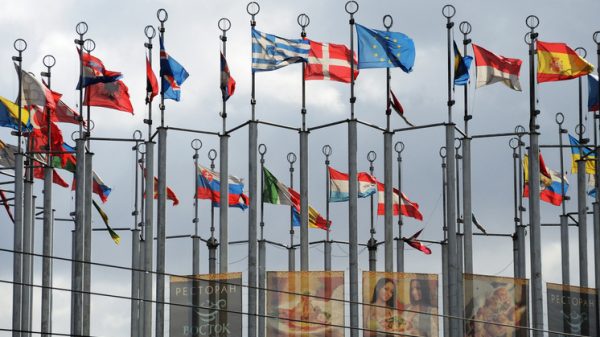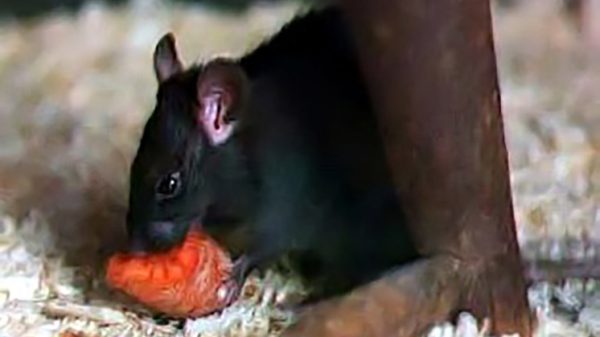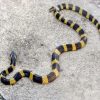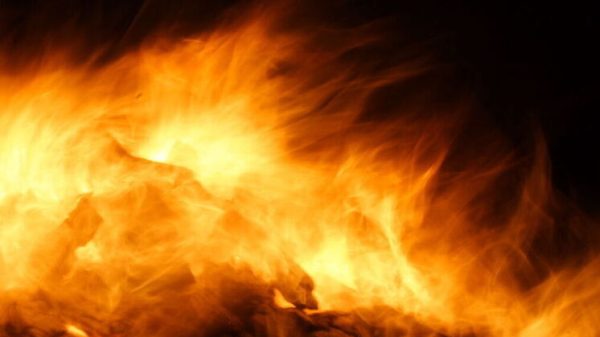Polar bears and narwhals are using up to four times as much energy to survive because of major ice loss in the Arctic, according to scientists.
Once perfectly evolved for polar life, apex predators are struggling as their habitats shrink and unique adaptations become less suited to an increasingly ice-free Arctic, researchers say.
Greenhouse gas emissions transforming the Arctic into ‘an entirely different climate’
Read more
The mammals are physiologically designed to use as little energy as possible. Polar bears are primarily “sit and wait” hunters, adapted to catching seals by breathing holes, and narwhals have evolved to dive very deep for prey without making fast movements. Now, however, they are having to work much harder to stay alive, according to a review article published in Journal of Experimental Biology.
Polar bears feed mainly on the energy-rich blubber of ringed and bearded seals, but this food source is harder to come by. The sea ice on which they hunt has shrunk by 13% every decade since 1979. Studies show that polar bears now swim for an average of three days to find seals, or search for less energy-dense terrestrial food sources, forcing them to travel greater distances.
Land-based resources are unlikely to compensate for the decline in seal feeding opportunities, meaning the bears are significantly more vulnerable to starvation. “A polar bear would need to consume approximately 1.5 caribou, 37 Arctic char, 74 snow geese, 216 snow goose eggs (ie 54 nests with four eggs per clutch) or 3m crowberries to equal the digestible energy available in the blubber of one adult ringed seal,” researchers write in the paper.
Narwhals are endurance swimmers that can reach depths of 1,500 metres (5,000ft) in search of Greenland halibut, their favourite prey. They need reliable breathing holes, but the ice is changing rapidly and moving in new ways, meaning holes have shifted and in some cases disappeared.
“The Arctic world is so much more unpredictable for these animals now,” said Dr Terrie Williams, a co-author of the report from the department of ecology and evolutionary biology at the University of California, Santa Cruz. “With a finite amount of oxygen in their muscles and blood, we find that the narwhals budget their speed, depth, and duration of dives to match the capacity of their internal scuba tanks. One miscalculation could result in drowning.”
The climate crisis is also causing their migration to change, and opening up Arctic regions to industrial activity, which is infringing on narwhal territories. Killer whales, another apex predator, have joined the marine Arctic ecosystem and are known to attack and kill slow-moving narwhals.
The review collates a number of research papers to better understand how the Arctic’s traditional apex predators are likely to decline. “We wanted to kind of summarise what we know about the physiology of those animals … we really saw a lot of similarities between them,” said Dr Anthony Pagano, a co-author from the institute for conservation research at San Diego Zoo Global.
The decline of polar bears and narwhals is likely to have a knock-on effect on other ice-dependent mammals and their prey, leading to “rapid changes in the entire Arctic marine ecosystem”, researchers say. Mammals such as beluga whales, Arctic foxes and musk oxen are likely to be vulnerable to similar changes.
The paper corroborates existing models that predict a global decline in polar bear abundance of between one and two-thirds by the end of the century. “We have to reduce our carbon footprint using every bit of human ingenuity we can muster. If for no other reason than a world without polar bears and narwhals would be a sadder place,” said Williams.
Prof Klaus Dodds, from the department of geography at Royal Holloway, University of London, who was not involved in the study, said it was an important paper. “As the Arctic continues to burn, melt and thaw, there will continue to be a cascade of shocks and reverberations.
“Iconic species such as the polar bear, seal and whale are vulnerable to changes in sea ice distribution and thickness. As marine ecologies shape-shift, perfectly adapted mammals to a reliably frozen environment will struggle to adapt. The cost of current and future adaption will be high.”
Prof Steve Albon, an honorary research associate at the James Hutton Institute, who was not involved in the research, said: “By calculating the energetic costs of the loss of sea ice to these predators we can foretell the likely consequences for their reproduction and survival long before we have the evidence of their declining numbers.”






















































Свежие комментарии